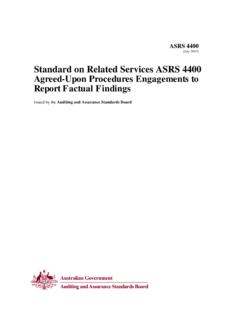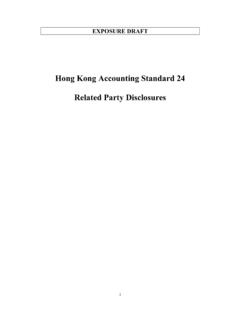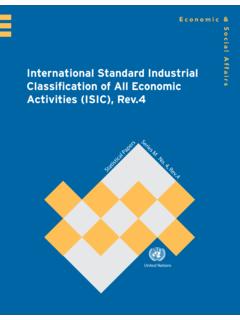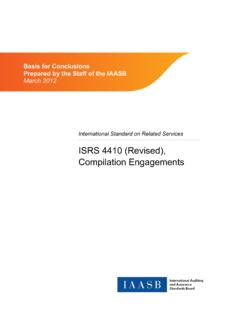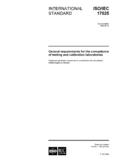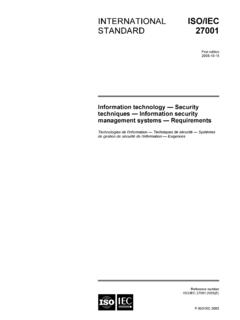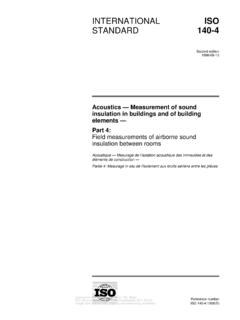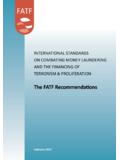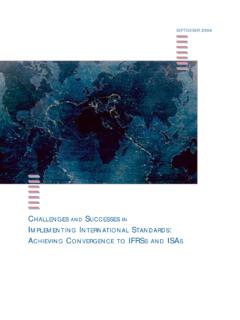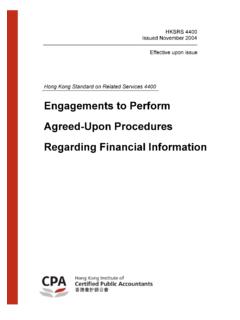Transcription of Combating Money Laundering and the Financing …
1 Workbook 1. Effect on Economic Development and international Standards 3 Workbook 2. Legal Requirements to Meet international Standards 71 Workbook 3a. Regulatory and Institutional Requirements for AML/CFT 151 Workbook 3b. Compliance Requirements for Financial Institutions 255 Workbook 4. Building an Effective Financial Intelligence Unit 347 Workbook 5. Domestic (Inter-Agency) and international Cooperation 439 Workbook 6. Combating the Financing of Terrorism 503 Workbook 7. Investigating Money Laundering and Terrorist Financing 605 Combating Money Laundering and the Financing of TerrorismA Comprehensive Training Guide1 Combating Money Laundering and the Financing of Terrorism: A Comprehensive Training GuideWorkbookEff ects on Economic Development and international Standards1 Combating Money Laundering and the Financing of Terrorism: A Comprehensive Training GuideEff ects onEconomic Developmentand international StandardsWorkbook 2009 The international Bank for Reconstruction and Development / The World Bank1818 H Street NWWashington DC 20433 Telephone: 202-473-1000 Internet: : rights reserved1 2 3 4 12 11 10 09 This volume is a product of the staff of the international Bank for Reconstruction and Development / The World Bank.
2 The fi ndings, interpretations, and conclusions expressed in this volume do not necessarily refl ect the views of the Executive Directors of The World Bank or the governments they World Bank does not guarantee the accuracy of the data included in this work. The boundaries, colors, denominations, and other information shown on any map in this work do not imply any judgement on the part of The World Bank concerning the legal status of any territory or the endorsement or acceptance of such and PermissionsThe material in this publication is copyrighted. Copying and/or transmitting portions or all of this work without permission may be a violation of applicable law. The international Bank for Reconstruction and Development / The World Bank encourages dissemination of its work and will normally grant permission to reproduce portions of the work permission to photocopy or reprint any part of this work, please send a request with complete information to the Copyright Clearance Center Inc.
3 , 222 Rosewood Drive, Danvers, MA 01923, USA; telephone: 978-750-8400; fax: 978-750-4470; Internet: other queries on rights and licenses, including subsidiary rights, should be addressed to the Offi ce of the Publisher, The World Bank, 1818 H Street NW, Washington, DC 20433, USA; fax: 202-522-2422; e-mail: 978-0-8213-7569-3eISBN: 978-0-8213-7570-9 DOI: of Congress Cataloging-in-Publication DataCombating Money Laundering and the fi nancing of terrorism : a comprehensive training guide. p. cm. A World Bank and international Monetary Fund publication. Includes bibliographical references. ISBN 978-0-8213-7569-3 -- ISBN 978-0-8213-7570-9 (electronic) 1. Money Laundering . 2. Terrorism--Finance. 3. Terrorism--Prevention. I. World Bank. II. international Monetary Fund. 2009 '4--dc22 2009009952 iiiAbout the Training ModulesCombating Money Laundering and the Financing of Terrorism: A Comprehensive Training Guide is one of the products of the Capacity Enhancement Program on Anti Money Laundering and Combating the Funding of Terrorism (AML/CFT), which has been co-funded by the Governments of Sweden, Japan, Denmark, and Canada.
4 The program offers countries the tools, skills, and knowledge to build and strengthen their institutional, legal, and regulatory frameworks to successfully implement their national action plan on these efforts. This workbook is one of the following training course modules:MODULE 1: EFFECTS ON ECONOMIC DEVELOPMENT AND international STANDARDSM odule 1 introduces the fundamental concepts of Money Laundering and terrorist fi nancing; their implications for development from economic, social, and governance perspectives; and existing international standards and key international players in the fi ght against Money Laundering and terrorist fi 2: LEGAL REQUIREMENTS TO MEET international STANDARDSM odule 2 covers satisfying the international standards on AML/CFT and the legislative action that this usually requires. In exploring those implications and possible legislative needs, this workbook answers the following questions:What are the international conventions and treaties that deal with AML/CFT?
5 What legal and institutional arrangements satisfy international standards? What are the legal issues related to international cooperation? Where can one fi nd model laws? MODULE 3A: REGULATORY AND INSTITUTIONAL REQUIREMENTS FOR AML/CFTM odule 3a introduces the regulatory and institutional requirements for AML/CFT and addresses the following issues:Responsibility for effective supervision Institutions subject to AML/CFT compliance The principal regulatory and institutional requirements Internal audit and compliance programs Professional associations and their roles Enforcement of AML/CFT requirements MODULE 3B: COMPLIANCE REQUIREMENTS FOR FINANCIAL INSTITUTIONSM odule 3b considers AML/CFT from the perspective of a bank or other fi nancial institution and provides the necessary information for employees of such institutions who deal with a wide range of AML/CFT issues.
6 It also provides additional inputs for compliance offi cers of fi nancial institutions. A separate section of the workbook deals with some issues that are more pertinent to compliance offi | Module 1 MODULE 4: BUILDING AN EFFECTIVE FINANCIAL INTELLIGENCE UNITM odule 4 examines the fi nancial intelligence unit (FIU) and its role in the national AML/CFT regime and addresses the following issues:Basic concepts of the FIU, suspicious transaction reports, and how they fi t into AML/CFT regimes Building FIU functionality Coordination and cooperation at the policy and operational levels Skills, integrity, and security of FIU personnel MODULE 5: DOMESTIC (INTERAGENCY) AND international COOPERATIONM odule 5 introduces the importance of interagency and international cooperation in the fi ght against Money - Laundering 6: Combating THE Financing OF TERRORISMM odule 6 focuses on Combating the fi nancing of terrorism (CFT), a new area for many countries compared to the anti- Money Laundering (AML) effort.
7 The workbook starts with a brief review of the CFT issues raised in the previous workbooks, addresses some general questions related to CFT, and then discusses the FATF Nine Special Recommendations on Terrorist Financing in combination with the international obligation of 7: INVESTIGATING Money Laundering AND TERRORIST FINANCINGM odule 7 introduces the practice of investigating activities that involve Laundering of the proceeds of crime and discusses investigations of terrorist fi nancing initial work for this training program was provided by Emiko Todoroki and Azuma Miura, the World Bank. Module 3a was further written and developed by Manuel Vasquez, international Monetary Fund. The draft was reviewed by John McDowell, the World Bank and Thomas Grahn, Financial Supervisory Authority of Sweden. Pedagogical guidance was provided by Sheila Jagannathan, and peer review was conducted by Emiko Todoroki, the World Bank.
8 In 2007 and 2008, updates and review were provided by Klaudijo Stroligo, Cedric Mousset, Paul Allan Schott, and Emiko Todoroki, the World Bank. Key sources for this workbook include Financial Action Task Force on Money Laundering , The Forty Recommendations (2003) and Special Recommendations on Terrorist Financing (2005); and Paul Allan Schott, Reference Guide to Anti Money Laundering and Combating the Financing of Terrorism, Second Edition, the World Bank, ENHANCEMENT PROGRAM ON ANTI Money Laundering AND Combating THE Financing OF TERRORISMP rogram Director: Latifah Merican Cheong Task Team Leader: Emiko TodorokiInstructional Design: Sheila JagannathanProduction: Miguel Nicolas De La Riva, : James QuigleyDesign: Naylor Design, Washington, : Precision Graphics, Champaign, IllinoisEff ects onEconomic Developmentand international StandardsModule 1 introduces the fundamental concepts of Money Laundering and ter-rorist fi nancing.
9 Their implications for development from economic, social, and governance perspectives; and existing international standards and key interna-tional players in the fi ght against Money Laundering and terrorist fi nancing. In this module the following key issues will be addressed: 1. Understanding Money Laundering and terrorist fi nancing What is Money Laundering ? How does Money Laundering occur? What is terrorist fi nancing and how does it compare and contrast with Money Laundering ? Where do Laundering and terrorist fi nancing operations take place? 112. The implications of Money Laundering and terrorist fi nancing for development How do Money Laundering and terrorist fi nancing affect the macroeconomy? How do Money Laundering and terrorist fi nancing affect the rule of law?
10 How do Money Laundering and terrorist fi nancing affect the fi nancial system? What are the effects of Money Laundering and terrorist fi nancing on economic liberalization? What are the effects of Money Laundering on governance? 223. international standards and standard setters Why is there a need for an international framework to combat Money Laundering and terrorist fi nancing? What are the international standards to fi ght Money Laundering and terrorist fi nancing? What organization sets those standards? What is the FATF, what does it do, and who are its members? 242 | Module What do the FATF Recommendations include? Are there any other international bodies involved in fi ghting Money Laundering and terrorist fi nancing? 284. Assessing compliance with international standards Why assess compliance? Who assesses compliance with the international standards?










